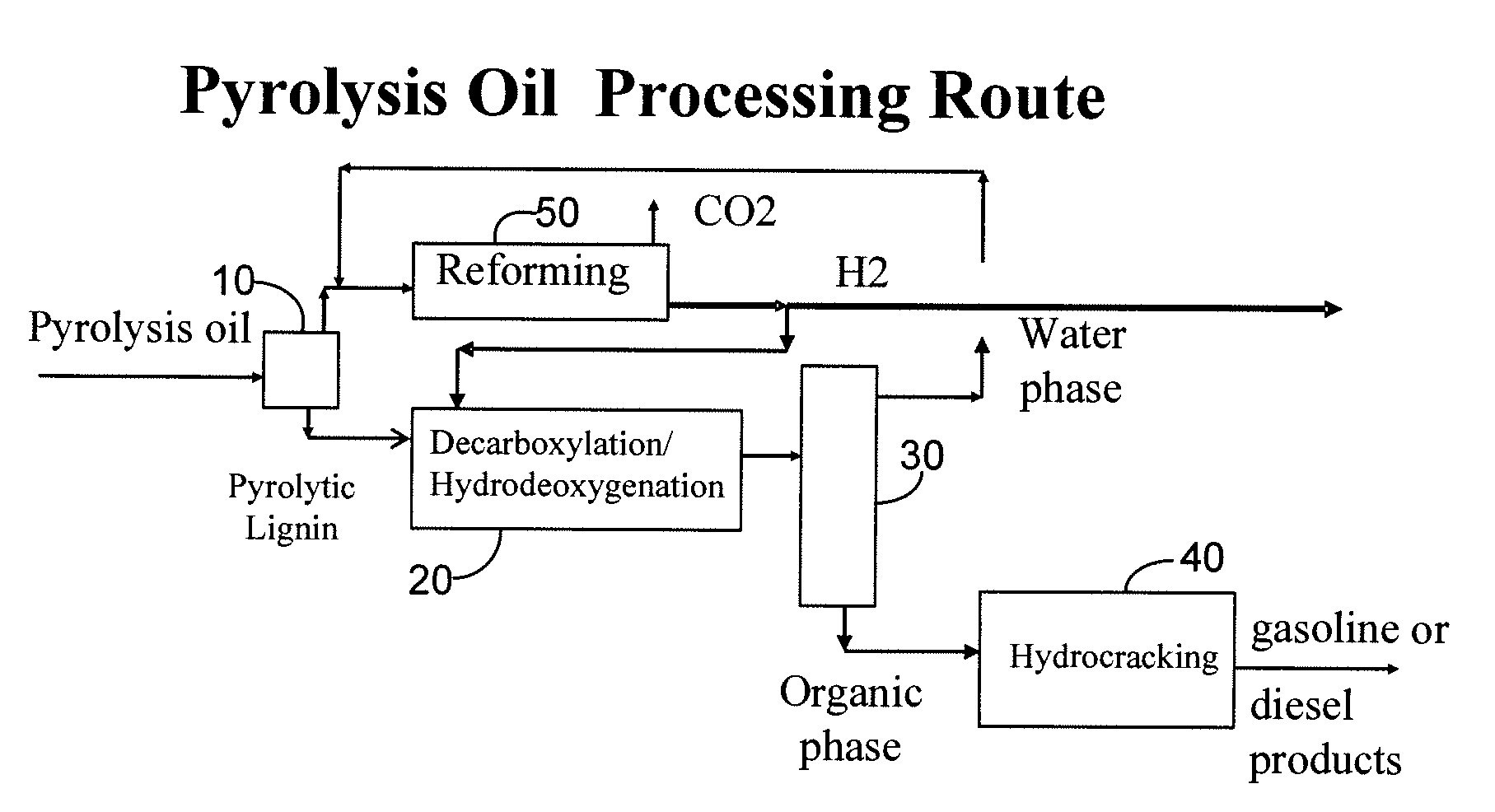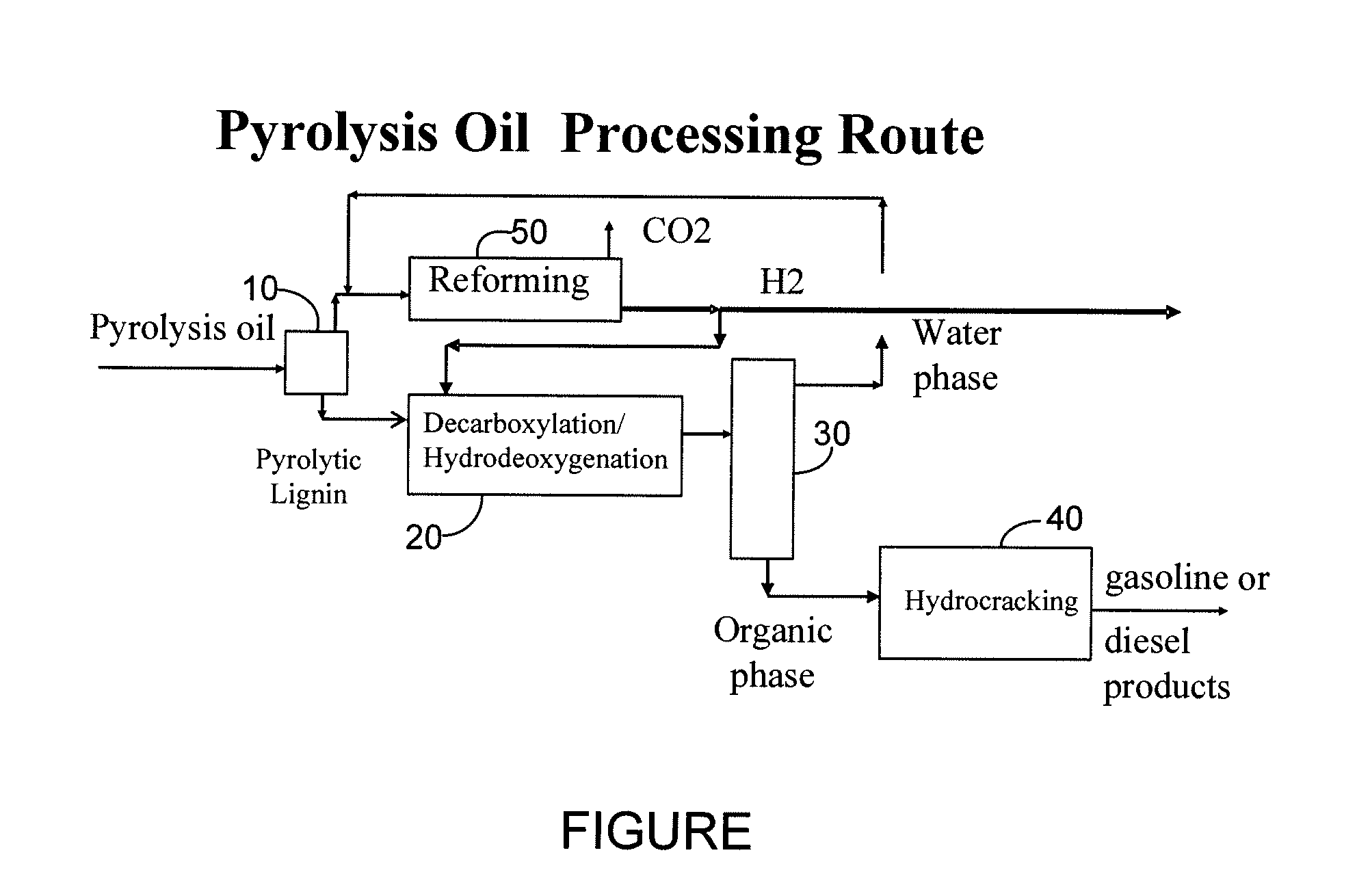Gasoline and diesel production from pyrolytic lignin produced from pyrolysis of cellulosic waste
a technology of pyrolysis and cellulosic waste, which is applied in the direction of hydrocarbon oil cracking, bio-feedstock, fuels, etc., can solve the problems of uneconomical and difficult direct use of pyrolysis oil, and achieve the effect of high yield
- Summary
- Abstract
- Description
- Claims
- Application Information
AI Technical Summary
Benefits of technology
Problems solved by technology
Method used
Image
Examples
example
[0021]The pyrolysis oil was separated into two streams before hydrotreating the pyrolytic lignin, a pyrolytic lignin stream and a water soluble pyrolysis oil phase stream. The separation was performed using two methods, a water precipitation method and a density method. The pyrolytic lignin has an enriched carbon content and a reduced oxygen content relative to the pyrolysis oil before separation, as shown in Table 1. The amount of pyrolytic lignin that is recoverable from the pyrolysis oil before hydrotreating is about 30% by weight of the pyrolysis oil. Different separation methods can yield slightly different results. The elemental analyses in Table 1 are shown on a moisture free basis as indicated by “mf”.
TABLE 1PyrolysisPyrolyticWater SolublePyrolyticWater SolubleOilLigninPyrolysis OilLigninPyrolysis OilWeight %10027733268SeparationWaterWaterDensityDensitymethodprecipitationprecipitation% C mf44.76935.862.336.5% H mf7.26.97.36.97.3% N mf0.20.30.20.30.2% O mf47.923.856.730.556.0...
PUM
 Login to View More
Login to View More Abstract
Description
Claims
Application Information
 Login to View More
Login to View More - R&D
- Intellectual Property
- Life Sciences
- Materials
- Tech Scout
- Unparalleled Data Quality
- Higher Quality Content
- 60% Fewer Hallucinations
Browse by: Latest US Patents, China's latest patents, Technical Efficacy Thesaurus, Application Domain, Technology Topic, Popular Technical Reports.
© 2025 PatSnap. All rights reserved.Legal|Privacy policy|Modern Slavery Act Transparency Statement|Sitemap|About US| Contact US: help@patsnap.com


